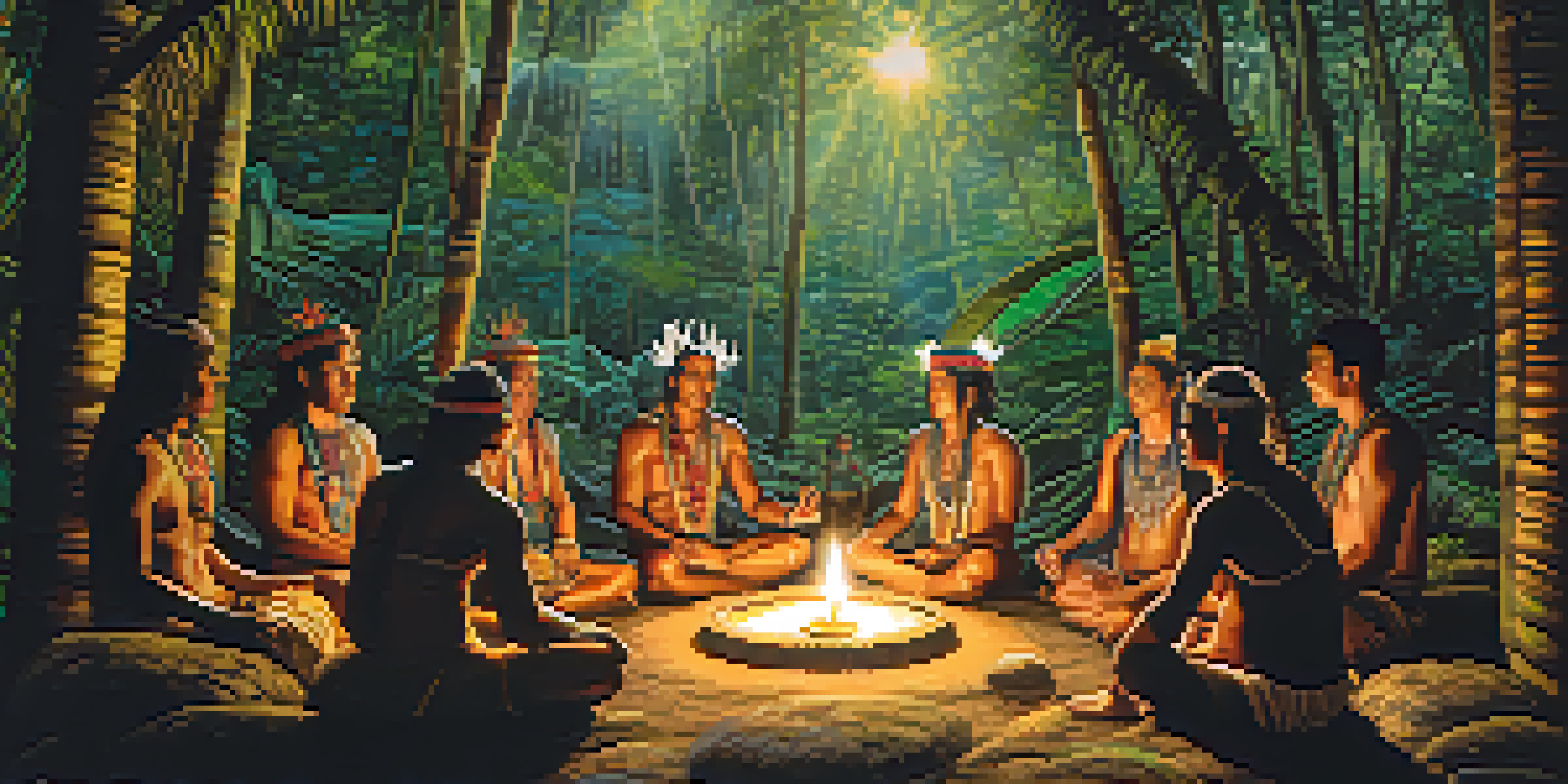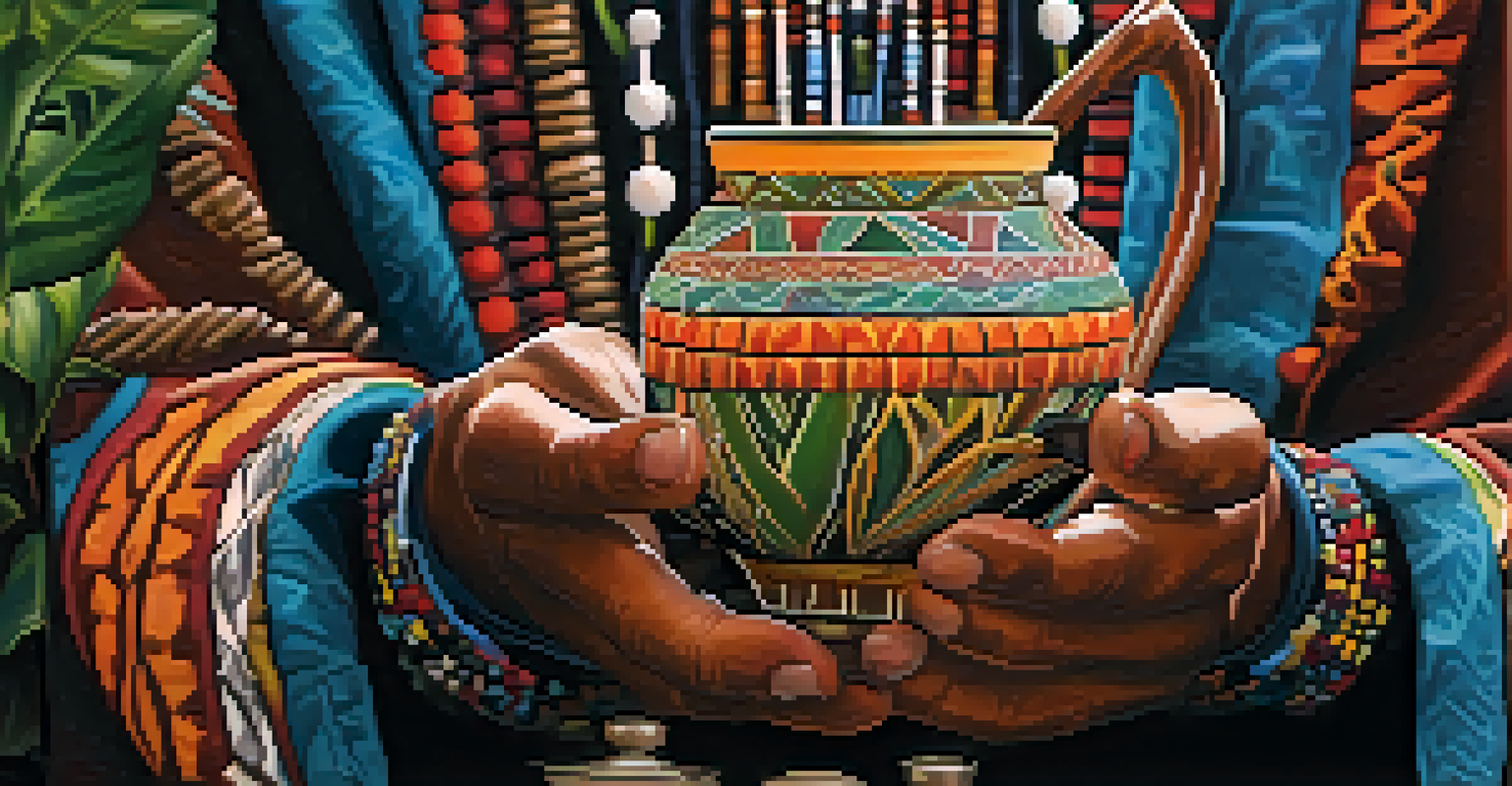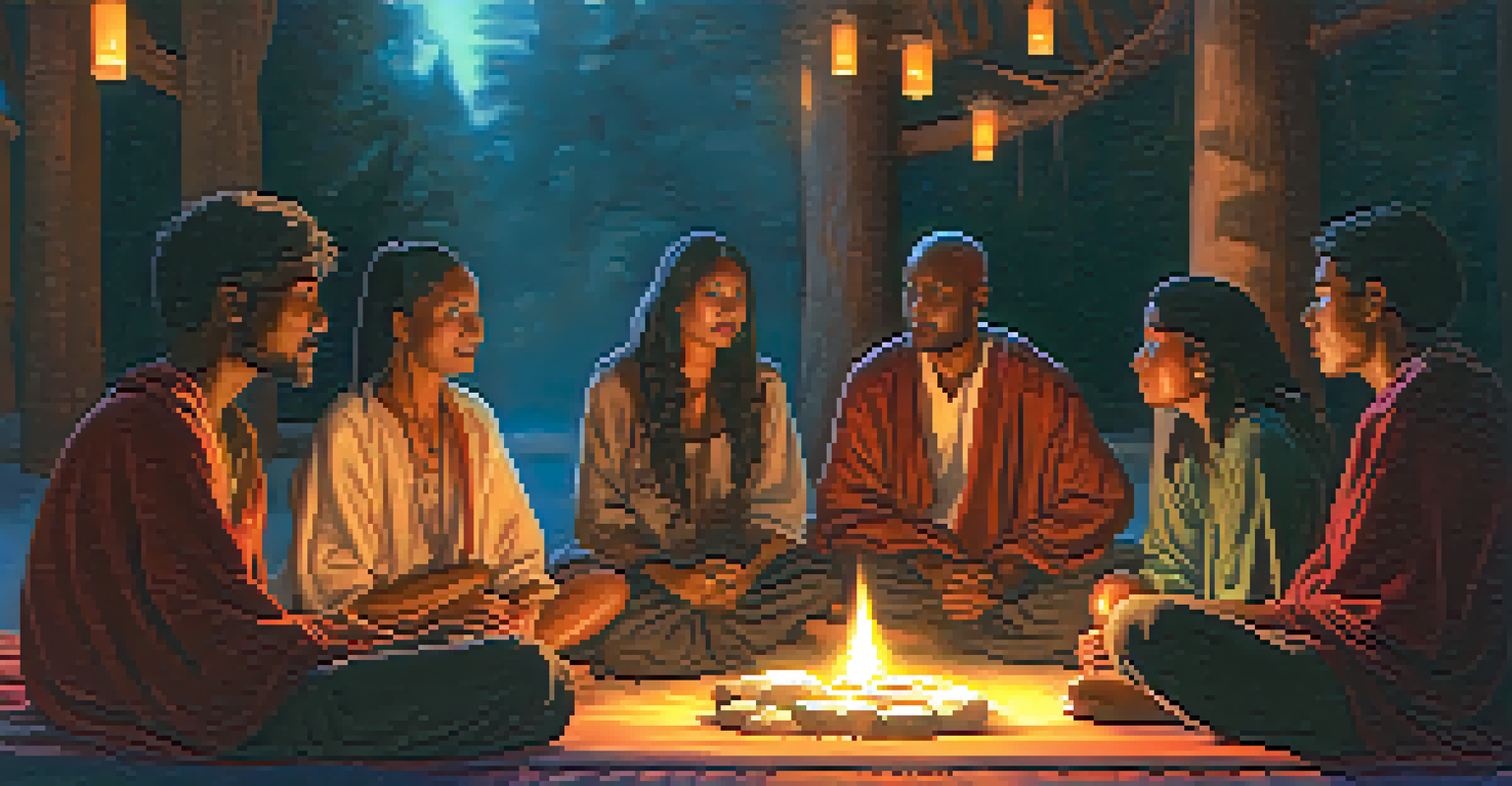Shamanic Healing Practices During Ayahuasca Ceremonies

Understanding Ayahuasca and Its Cultural Significance
Ayahuasca, a potent brew made from Amazonian plants, is steeped in cultural significance. Traditionally used by indigenous tribes, it serves as a spiritual guide, facilitating deep introspection and healing. The practice has gained popularity worldwide, drawing people seeking transformation and insight.
The greatest discovery of my generation is that a human being can alter his life by altering his attitude of mind.
At its core, ayahuasca is more than just a psychedelic experience; it’s a tool for understanding the self and the universe. Participants often report profound insights into their lives, relationships, and even their purpose. This makes it a powerful catalyst for change.
However, engaging with ayahuasca isn’t simply about consumption; it's about the context in which it is taken. The ceremonial aspect, led by a trained shaman, plays a crucial role in ensuring a safe and meaningful journey.
The Role of the Shaman in Ayahuasca Ceremonies
The shaman acts as a spiritual guide throughout the ayahuasca ceremony, holding space for participants as they navigate their experiences. With deep knowledge of the plants and the spiritual world, the shaman helps create a safe environment for healing. Their role is not just to administer the brew, but to facilitate a journey of self-discovery.

During the ceremony, shamans may use various tools, such as icaros—traditional songs that are believed to invoke healing energies. These melodies can guide participants through their journey, helping them confront fears and uncover hidden truths. It’s a beautiful blend of music, intention, and spirituality.
Ayahuasca's Cultural Significance
Ayahuasca is a potent brew used traditionally by indigenous tribes for spiritual guidance, healing, and profound self-discovery.
Moreover, the shaman's connection to the spiritual realm is vital. They often enter altered states themselves to better serve the participants, ensuring that everyone is supported throughout their individual processes.
Healing Through Introspection and Connection
One of the primary benefits of ayahuasca ceremonies is the opportunity for introspection. Participants often find themselves facing unresolved traumas or emotions, which can lead to significant healing. This process is facilitated by the shaman's presence and the supportive group dynamic.
Healing is a matter of time, but it is sometimes also a matter of opportunity.
As participants share their experiences, they often realize they are not alone in their struggles. This sense of community can be incredibly healing, as it fosters understanding and compassion among individuals. The collective energy of the group amplifies the healing potential of the experience.
Additionally, ayahuasca can help individuals connect with their true selves and the world around them. This deepened connection often leads to a renewed sense of purpose and clarity, allowing participants to return to their lives with a fresh perspective.
The Importance of Setting and Intention
Setting and intention are crucial components of a successful ayahuasca ceremony. The environment must be safe, sacred, and conducive to healing; this is where the shaman’s expertise shines. Creating a nurturing space helps participants feel secure enough to explore their inner landscapes.
Intention also plays a vital role in the journey. Participants are encouraged to set personal goals or themes for their experience, guiding the energy of the ceremony. This focused intention can help unlock deeper layers of understanding and healing.
Role of the Shaman
The shaman serves as a crucial spiritual guide during ceremonies, facilitating journeys of introspection and healing through their expertise and connection to the spiritual realm.
By aligning the setting and intention, participants can maximize their potential for transformation. This intentional approach helps ensure that every journey is unique and deeply personal.
Integrating the Experience After the Ceremony
Integration is a critical step following an ayahuasca ceremony, as it involves processing the insights gained during the experience. Many participants find that journaling or discussing their experiences with others can be incredibly beneficial. This reflection allows for a deeper understanding of the lessons learned.
Support from the shaman and fellow participants can also aid in this integration process. Sharing insights and feelings within a safe community fosters connection and deeper understanding. It’s a way to keep the healing journey alive long after the ceremony ends.
Moreover, integrating experiences may involve lifestyle changes or new practices that support ongoing growth. This could include meditation, therapy, or even changes in diet, all contributing to a more balanced and fulfilling life.
Safety Considerations in Ayahuasca Ceremonies
While ayahuasca can offer profound healing, it’s essential to approach it with respect and caution. Participants should ensure they choose reputable shamans and ceremonies, as the quality and safety of the experience can vary. Researching the shaman's credentials and past participant experiences is crucial.
Additionally, it’s vital to disclose any medical conditions or medications to the shaman beforehand. Certain health issues and medications can interact negatively with ayahuasca, making open communication key to a safe experience. This precaution helps minimize risks and ensures that everyone can participate safely.
Importance of Integration
Post-ceremony integration is essential for processing insights and can involve lifestyle changes that support ongoing personal growth and healing.
Ultimately, taking these safety measures can help participants feel more at ease, allowing them to fully immerse themselves in the healing journey.
The Future of Shamanic Healing and Ayahuasca Practices
As interest in ayahuasca and shamanic practices grows, so does the need for responsible and ethical engagement. This includes respecting indigenous cultures and ensuring that practices are not commodified. It's crucial to honor the traditions and knowledge that have been passed down for generations.
Furthermore, ongoing research into the therapeutic benefits of ayahuasca can enhance understanding and acceptance in the broader wellness community. Scientific studies are beginning to unveil the potential mental health benefits, offering a bridge between traditional practices and modern medicine.

The future of shamanic healing lies in the balance between honor and innovation. By respecting the roots of these practices while exploring their potential in contemporary contexts, we can create a respectful, transformative space for all.